Online Magazine
& Cooking Club

In This Issue
Feature Articles
Making heads & tails of
the squash kingdom
6 Tricks to Take the Bland
out of Summer Squash
Zucchini Overload:
how to turn over-
into advantage
5 Fast Ways to Cook Squash +
5 Simple Ways to Dress It Up
In Every Issue
Why We Love It
Top 10 Questions about Squash
The Green Kitchen
Picky Eater Tips
Money Saving Tricks
News from the Farm


Cooking School
Cooking Classes:
Greek Potato Salad
Zucchini Salad Americana
Buying the Best
Storing for Flavor
Prepping Tricks & Tips
Cooking Basics
Recipes, Recipes, Recipes
14 Easy, Creative Dishes Using Summer Squash


















“Not In My Backyard!”


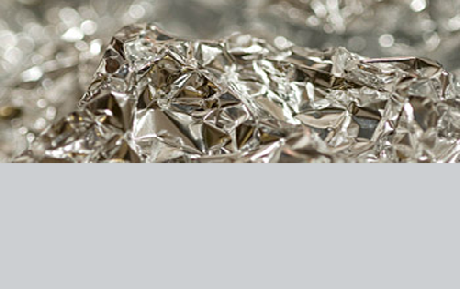

<<Green Kitchen



1. Scheme on Replacements Now that I think of it, do I really need foil to cover that casserole dish? Maybe an old cookie sheet would do for baking; plastic lids can be purchased for refrigerating. Bread can be warmed between two pie plates. . . . Let’s get creative!

Notes: My research went only 4 Google pages deep. Some of the sources are dated. Some industry sources insist that things are changing for the better. Let’s hope so, but in the meantime, Reduce, Reuse and Recycle.
1. “Jamaica Bauxite Case (BAUXITE)” undated white paper circa 1995, American University, Technology and Environment Database
2. “Chapter 7. Environmental Management in the Bauxite, Alumina, and Aluminum Industry in Brazil,” Liliana Acero, International Research Development Centre
3. “Bauxite Mining: Threatened Eastern Ghats of India,” Srinivas Ganjivarapu, Society for the Study of Peace and Conflict, Article No:108, March 08, 2007
4. “Measuring the environmental impact of aluminium production” 16 March 2006, produced by Commonwealth Scientific and Industrial Research Organisation, Australia's national science agency.
5. “Aluminum,” from the Environmental Literacy Council,
6. “Utkal Mining and Alumina Refinery Project, Environment related clearances and their implementation,”
7. “Aluminium Foil – Recycling, Source Reduction and Energy Recovery,” AZoM.com (A to Z of Materials)
4 Steps to Foil-less
2. Buy Recycled
For the few times when I can’t devise a foil replacement, I’ll use recycled. Robin Shreeves of Mother Nature Network explains: “Aluminum can be recycled over and over, and one of the things it can be recycled into is aluminum foil. It takes only 5 percent of the energy to make recycled aluminum foil that it would take to make foil from virgin aluminum.
3. Reuse
Once I use a new piece of foil, I’ll soak and wash it immediately afterwards so it can be used again, even if it’s missing its original shine and new-
4. Recycle
When the foil is finally used beyond recognition, I’ll take a couple seconds to wipe or rinse off any big food pieces so it can be recycled with my other cans.

Here’s my plan of attack:
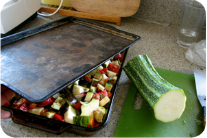
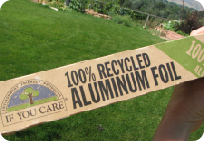

The telltale label on this foil reveals its source: a package of tamales from the local tortillaria. Dull and crinkled this foil might be, but it did a fine job of covering my Chili-
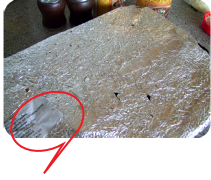
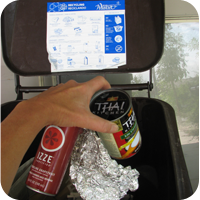
All this damage is just from the mining phase. Once mined, there’s the processing phase, where the bauxite ore is turned into aluminum. This phase uses a tremendous amount of power while also emitting perfluorocarbons (PFCs), “powerful greenhouse gases which remain permanently in the atmosphere once released.”
No doubt the production phase (when aluminum is transformed into foil) has even more impacts, but I didn’t need to read more. Making aluminum foil clearly isn’t something I’d want done in my back yard. So how can I stop dumping on the Jamaicans, the Indians, and whatever other people are supporting my fetish for shiny aluminum foil?
It’s a big problem, because aluminum is used in lots of things. But that’s not going to stop me from starting–even if it’s something small like the foil I use in the kitchen. Just imagine if we could each eliminate a roll, or two or three, each year.

What’s In a Piece of Aluminum Foil?
This time I decided to find out what happens upstream. Turns out, there’s a lot more than aluminum foil wrapped inside that cardboard box:
Without a second thought, I pull a piece of foil from the roll, loving the slight rustle it makes–the sound of shiny, new aluminum foil. This single act is a metaphor for my entire life: flipping on light switches, adoring the air conditioner, tapping on my computer and chatting on my cell phone, never wondering “What happens upstream and to whom?”



Don’t Be Foiled

Mud: To produce one ton of alumina (the starting point for aluminum), one ton of red mud waste is created. This presents a monument-
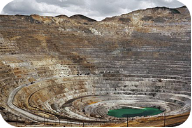
Water Contamination Making matters worse, the mud waste is laced with caustic soda (used to extract alumina from its native bauxite ore) which seeps into the groundwater after the mud is dumped.
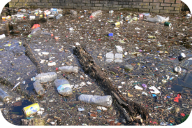
Deforestation Bauxite ore is mined from big open pits which means forest lands and their habitats and aquifers get replaced with big red scars.
Erosion Once lands are deforested, erosion begins.
Noise, Air Pollution Mining requires road construction through dense forests, liquid and gaseous effluents emissions, bright illumination, blasting with explosives, drilling and resultant vibration and dust and the operation of heavy loading and unloading equipment.
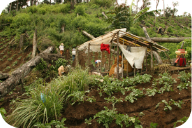
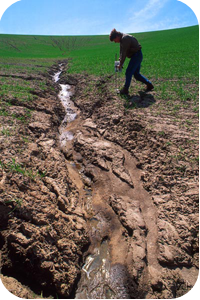
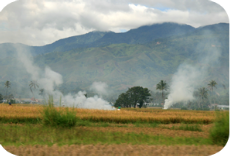
Wildlife Disruption It goes without saying that animal life is disrupted.
Native Population Dislocation Native peoples are also dislocated. For example, in the Eastern Ghats of India, “[t]wenty-
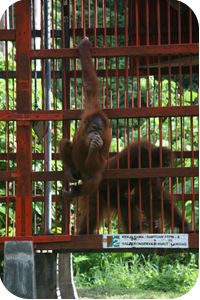
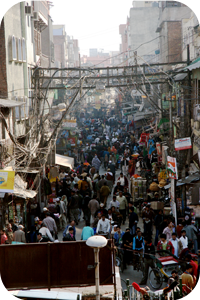
Soil Erosion


© 2009 Culinary Concepts, Inc., Boulder CO


Next Page

Prev Page